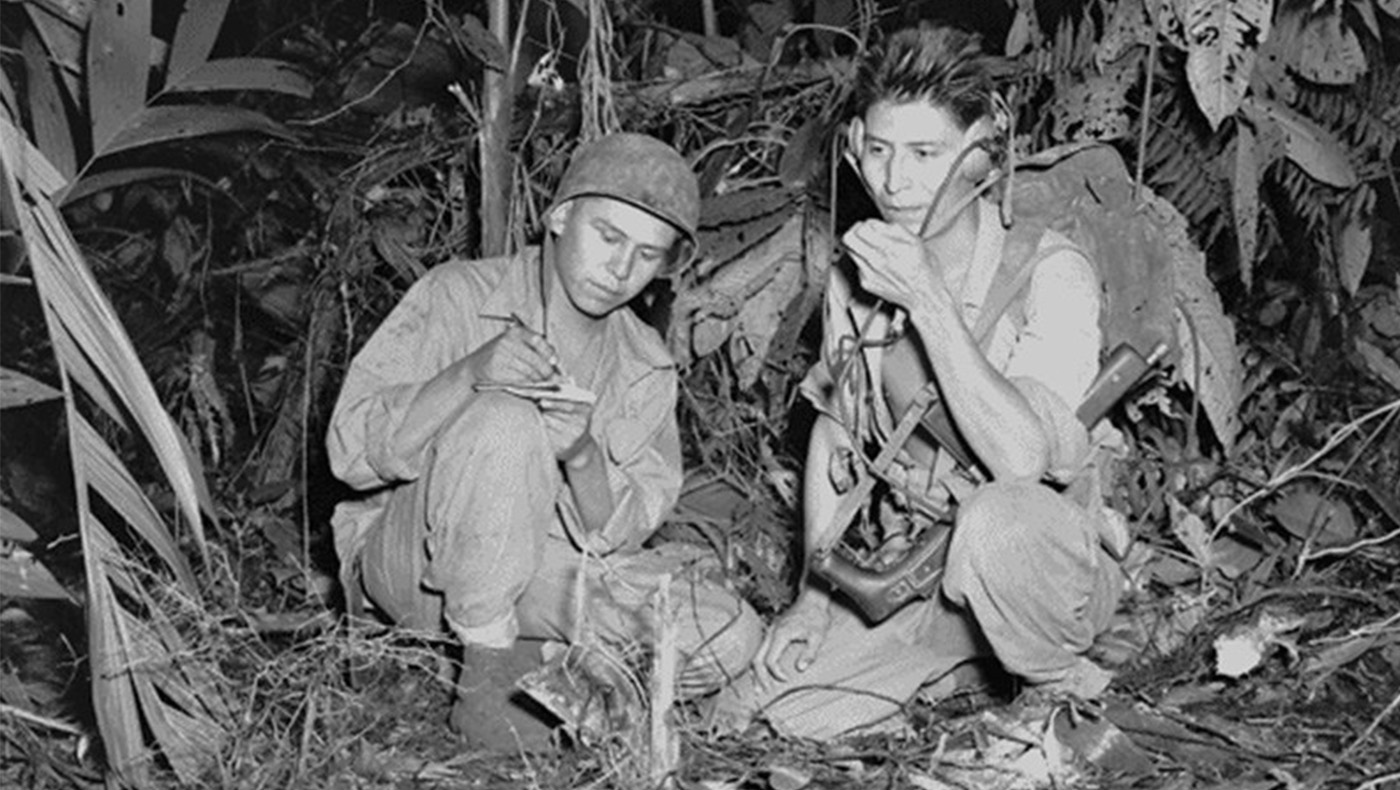During the height of WWII, the U.S. Military hired 29 Navajos in a test program to develop a secret code based on the Navajo language. The program was a success, and the military hired around 400 Navajos throughout the war to work as “Code Talkers,” translating the 411 keywords and the alphabet system of the Navajo code. Messages that traditionally took soldiers hours to decipher took the Code Talkers just two and a half minutes. The Navajo code helped secure an allied victory in the pacific.
Yet the Navajo language is endangered — at risk of dying with the number of native speakers dwindling. The language’s obscurity, stark contrast to English and romance languages, and history as an unwritten language, all of which made Navajo an ideal choice for the military, are the same reasons the language is at risk of abandonment by its community. Many other Native American languages teeter on the brink of the same fate. During Native American Heritage Month, Northeastern University professors reflect on the success of the Code Talkers and how to preserve these endangered languages.
Many languages die when a new and dominating language is introduced into a community. In the case of Native Americans, it was English and Spanish, brought by European colonizers. In many cases, life is easier for community members once they switch to the dominant language: It’s easier to get a job, access services in the community, and avoid discrimination.
Language rescue and revitalization involves first documenting the language so that knowledge of the language is not lost, said Northeastern linguistics professor Adam Cooper. Then, the community must have access to educational opportunities to learn and relearn the language, and they must feel actively encouraged to speak it, which involves removing social and economic barriers for native speakers.
Documenting language is no easy task, especially when no written system exists. “Language is distinct from the way that it’s graphically represented from its written form,” Cooper said. “The fact that we can use the Roman alphabet and adapt to different languages speaks to the fact that it’s a kind of tool used to spread language, but it’s not itself language.”
Navajo developed as a language completely independent of English and other romance languages. Even within its Native American language family, it’s an outlier in terms of structure, Cooper said. So, documenting the language with the roman alphabet required careful thought and the repurposing of letters by the Code Talkers.
Cryptography, the study of ways to securely transmit information, has been used extensively during wartime. Soldiers use cryptography to prevent enemies from intercepting messages. While historically, people like the Code Talkers have performed cryptography by hand, now computers do the work, encrypting and decrypting everything from war messages to text messages and emails.
“The idea is, you want to find some kind of computational problem that’s easy to go in one direction, but hard to go in the other,” said Northeastern mathematics professor Evan Dummit.
Language use in cryptography dates back millennia. For example, Egyptian hieroglyphics and Middle Eastern cuneiform were easy for native speakers to write, but they have been incredibly difficult for historical linguists to decipher. Cracking the code required years and years of work by hundreds of researchers.
“The fact that thousands of years after, cuneiform and hieroglyphics could be deciphered is a pretty remarkable feat,” said Cooper. “It’s really interesting to see. When you have the material and take a systematic approach, the seemingly indecipherable system can be broken down and understood.”
It is much more difficult for current-day researchers to understand the ancient texts simply because they lack the language’s full cultural context.
“Language is this system of communication, but it doesn’t exist in a vacuum,” Cooper said. “The language that we use is crucially connected to our sense of identity, the culture, the groups that were a part of it.”
In 1970, 95% of Navajo schoolchildren spoke the Navajo language. That number has dropped to just 3%. The Code Talkers incidentally began the revitalization process over a half-century ago with their careful and innovative documenting of the language. Now, the Navajo are tackling the next step: rejuvenating the connection between culture and language.
The past few decades have seen an increase in tribal-run education departments and cultural-based language education programs. Teachers in one Navajo education program designed to embrace Navajo teaching and learning styles felt the program made a difference. “My students have learned being bilingual and bicultural is a very powerful tool and they have the power to make changes in their lives and their environment both at school and outside the school,” one wrote.

